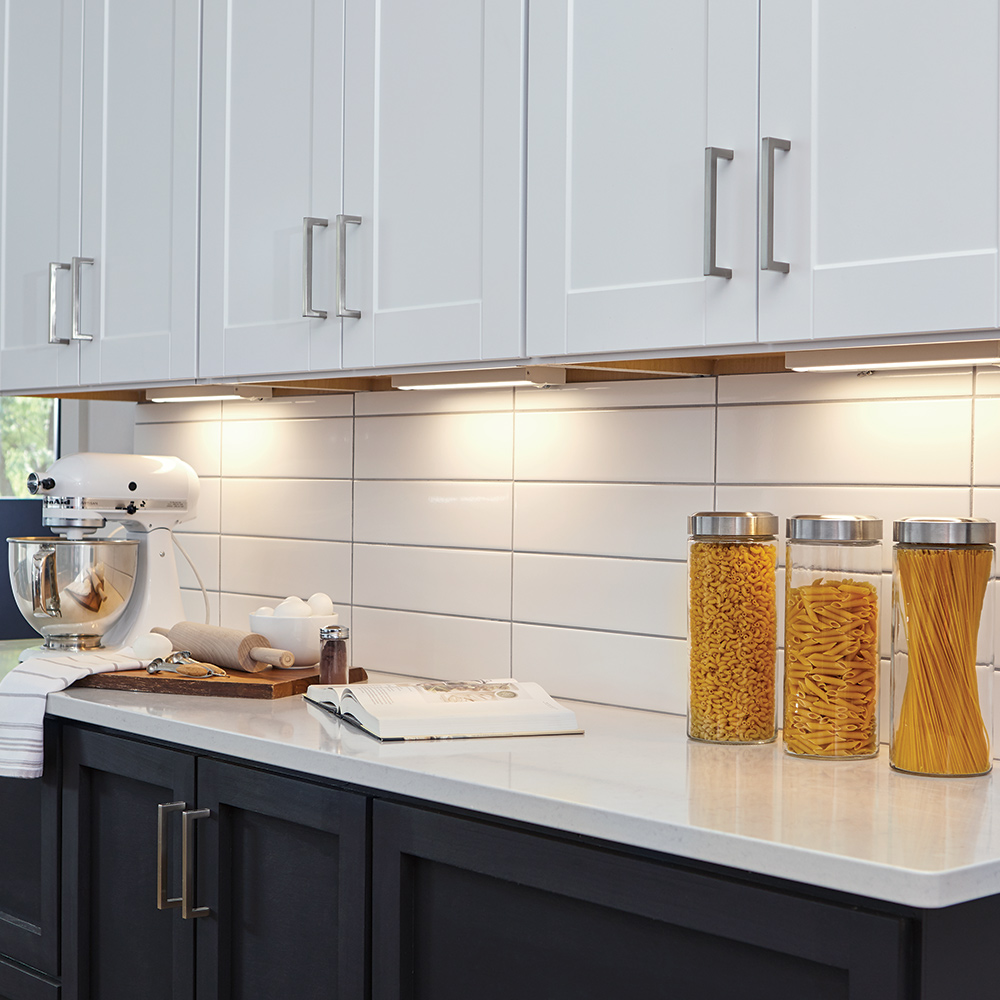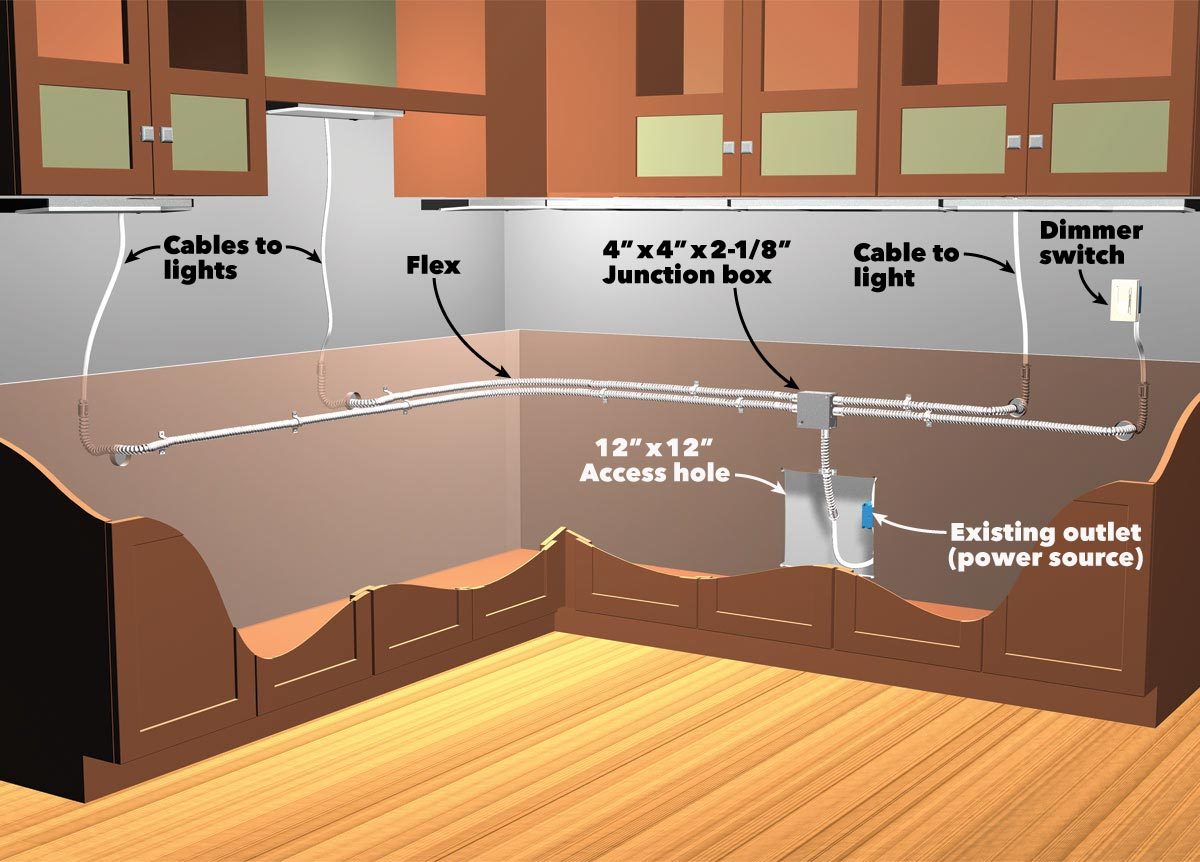Common Under Cabinet Lighting Issues

Under cabinet lighting, a popular choice for enhancing kitchen functionality and aesthetics, can sometimes encounter problems. Understanding the common causes of these malfunctions is crucial for effective troubleshooting. This guide explores the most frequent issues and provides insights into identifying and resolving them.
Power Supply Issues
Power supply problems are among the most common culprits behind under cabinet lighting malfunctions. These issues can stem from various factors, including faulty wiring, loose connections, or problems with the power source itself.
- Faulty Wiring: Damaged or improperly installed wiring can interrupt the flow of electricity to the lights, leading to flickering, dimming, or complete failure.
- Loose Connections: Connections between the wiring, the light fixtures, and the power source can loosen over time, causing intermittent or complete power loss.
- Power Source Problems: Issues with the electrical outlet, circuit breaker, or even the main power supply can affect the under cabinet lighting. This can manifest as a complete lack of power or inconsistent operation.
Troubleshooting power supply issues involves systematically checking each component in the electrical chain.
Start by inspecting the wiring for any visible damage, such as frayed wires or loose connections. If the wiring appears intact, check the connections at the light fixtures, the power source, and any junction boxes. If all connections are secure, consider testing the power outlet or circuit breaker to rule out problems with the power supply itself.
Light Bulb Problems
Light bulb failures are a common cause of under cabinet lighting issues. While it might seem obvious, a simple bulb replacement can often resolve the problem.
- Burned-Out Bulbs: Over time, light bulbs will eventually burn out. This is a normal part of the lifespan of any light bulb, and a simple replacement will restore functionality.
- Incorrect Bulb Type: Using the wrong type of light bulb can cause issues. For example, using a standard incandescent bulb in a fixture designed for LED bulbs can result in overheating or premature failure.
- Bulb Compatibility: Certain types of under cabinet lighting systems have specific bulb requirements. Using incompatible bulbs can lead to malfunction.
When troubleshooting light bulb issues, it’s essential to inspect the bulbs for signs of damage or burnout.
If a bulb is visibly burnt out, replace it with a new one of the same type and wattage. If the bulb appears intact, check the bulb’s compatibility with the fixture and ensure you are using the correct type of bulb.
Switch or Dimmer Issues
Under cabinet lighting often includes a switch or dimmer for controlling the brightness. These components can malfunction, leading to problems with the lights.
- Faulty Switch: A broken or faulty switch can prevent the lights from turning on or cause them to flicker.
- Dimmer Problems: Dimmer switches can malfunction, causing the lights to dim inconsistently or fail to respond to adjustments.
Troubleshooting switch or dimmer issues involves testing the switch or dimmer for proper operation.
If the switch is faulty, it may need to be replaced. If the dimmer is malfunctioning, consider resetting it or replacing it with a new one.
Troubleshooting Steps for Under Cabinet Lighting: Under Cabinet Lighting Troubleshooting

Troubleshooting under cabinet lighting can be a simple task, but knowing where to start is essential. Here’s a step-by-step guide to help you identify and fix common issues.
Check for Power
This is the first step to rule out any power-related problems.
- Check the Switch: Ensure the switch controlling the under cabinet lights is in the ON position. Look for a light indicator on the switch to confirm power is flowing.
- Check the Circuit Breaker: Locate the circuit breaker box and check if the breaker corresponding to the under cabinet lights is tripped. If it is, reset the breaker by flipping it to the OFF position and then back to the ON position.
- Check the Outlet: If the lights are plugged into an outlet, make sure the outlet has power. You can test this by plugging in another appliance.
Inspect Wiring
If the lights still don’t work, the problem might be with the wiring.
- Check the Connections: Inspect the wiring connections at the light fixture, the switch, and the power source. Make sure all connections are secure and there are no loose wires.
- Look for Damage: Examine the wires for any signs of damage, such as fraying, cuts, or burns. Damaged wires can cause a short circuit or prevent power from flowing to the lights.
- Check the Ground Wire: Ensure the ground wire is connected properly to the light fixture and the power source. This helps prevent electrical shock.
Test the Light Fixtures
If the wiring seems fine, the issue might be with the light fixtures themselves.
- Check the Bulbs: Replace the bulbs with new ones of the same type and wattage.
- Test the Fixture: If you have a multimeter, you can test the fixture for continuity. This will tell you if the fixture is receiving power and if there is a problem with the wiring within the fixture.
- Check for Corrosion: Look for signs of corrosion on the fixture’s terminals. Corrosion can prevent proper electrical contact and cause the lights to malfunction.
Solutions for Under Cabinet Lighting Problems

Troubleshooting under cabinet lighting problems can lead to a variety of solutions, depending on the root cause. Here, we will explore some of the most common fixes and their advantages and disadvantages, allowing you to choose the best approach for your specific situation.
Replacing Bulbs
Replacing burnt-out bulbs is the simplest solution. If the lights are dim or not working at all, a faulty bulb is often the culprit.
- Advantages: Easy and inexpensive.
- Disadvantages: May not be the solution if the problem is with the wiring or fixture itself.
Checking Wiring Connections
Loose or damaged wiring can cause flickering, dimming, or complete failure of the lights.
- Advantages: Relatively simple to fix if the issue is a loose connection.
- Disadvantages: Requires basic electrical knowledge. If the wiring is damaged, it may need to be replaced by a qualified electrician.
Replacing the Fixture
If the fixture itself is faulty or outdated, replacing it may be the best solution.
- Advantages: Can upgrade to more energy-efficient or aesthetically pleasing fixtures.
- Disadvantages: More expensive than replacing bulbs or checking wiring. May require some electrical knowledge for installation.
Using a Dimmer Switch, Under cabinet lighting troubleshooting
A dimmer switch allows you to adjust the brightness of the lights, which can be helpful if they are too bright or too dim.
- Advantages: Provides more control over the lighting.
- Disadvantages: Not always compatible with all fixtures. May require professional installation.
Installing a Motion Sensor
Motion sensor lights automatically turn on when movement is detected, which can be useful in kitchens or other areas where you need temporary lighting.
- Advantages: Saves energy by only turning on the lights when needed.
- Disadvantages: Can be more expensive to install. May not be suitable for all areas.
Comparing Solutions
Here’s a table comparing the costs, installation complexity, and effectiveness of each approach:
| Solution | Cost | Installation Complexity | Effectiveness |
|—|—|—|—|
| Replacing Bulbs | Low | Very Easy | High (if the problem is a faulty bulb) |
| Checking Wiring Connections | Low to Moderate | Moderate | Moderate (if the problem is a loose connection) |
| Replacing the Fixture | Moderate to High | Moderate to High | High (if the problem is with the fixture itself) |
| Using a Dimmer Switch | Moderate | Moderate | Moderate (if the problem is brightness) |
| Installing a Motion Sensor | High | High | High (for energy savings and convenience) |
Under cabinet lighting troubleshooting – If your under cabinet lighting is flickering or dim, the issue might be a faulty bulb, a loose connection, or even a problem with the wiring. But before you start replacing parts, consider the overall aesthetic of your kitchen.
White cabinets and light wood floors, as seen in this article , create a bright and airy feel, so ensuring your under cabinet lighting complements this style is crucial. Once you’ve addressed any electrical problems, you can fine-tune the brightness and color temperature of your lighting to create the perfect ambiance for your kitchen.
If your under cabinet lighting is malfunctioning, it can be frustrating, especially when trying to create a welcoming atmosphere in your kitchen. However, before you start tearing apart your cabinets, consider the possibility that the problem lies with the power source or a faulty switch.
If you’re looking for a new place to call home with a kitchen you can truly enjoy, check out the 1 bedroom apartments concord nc offer. Once you’ve found the perfect apartment, you can focus on fixing those under cabinet lights, knowing you’ll have a space that’s both functional and stylish.